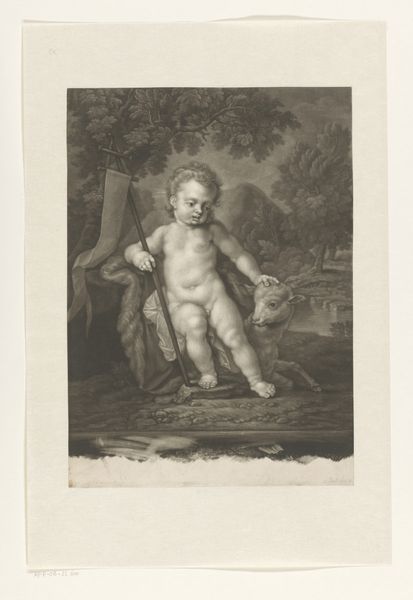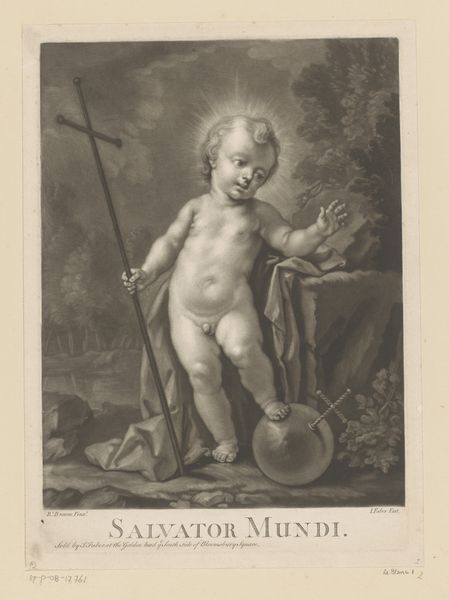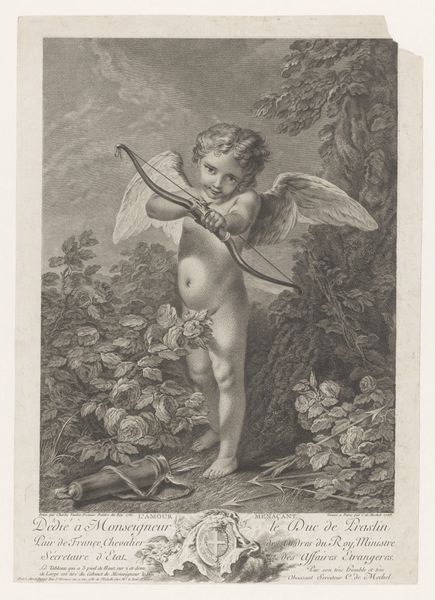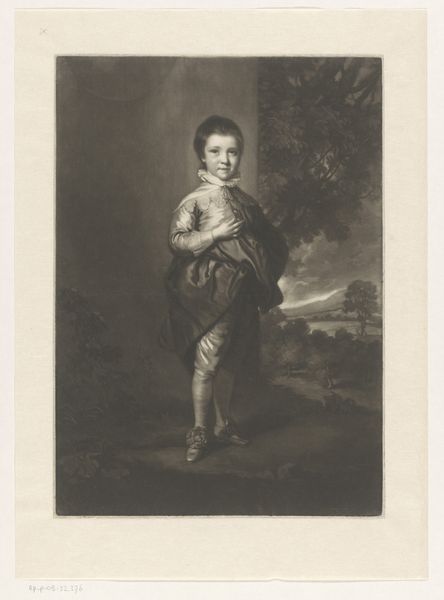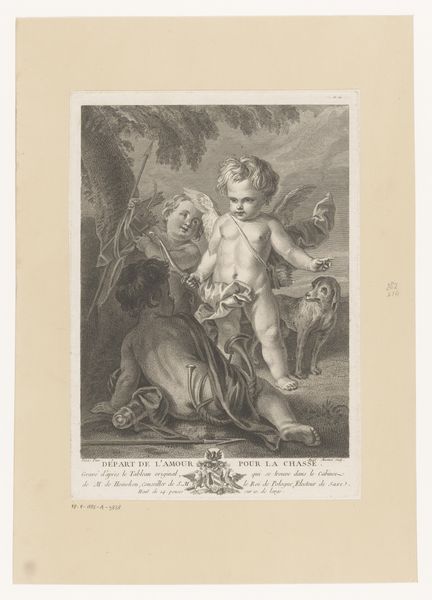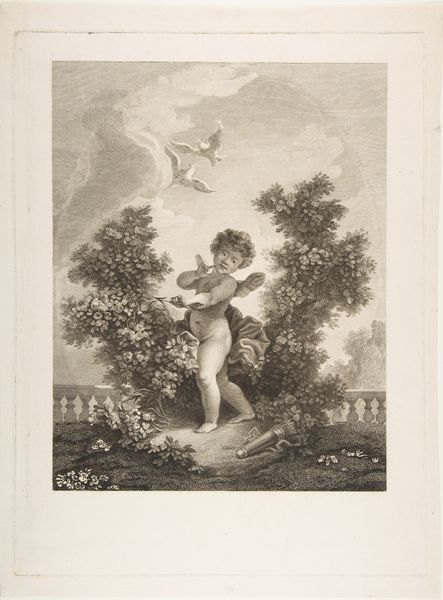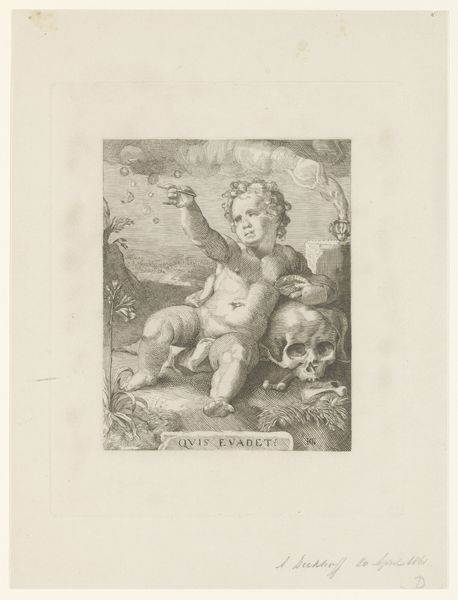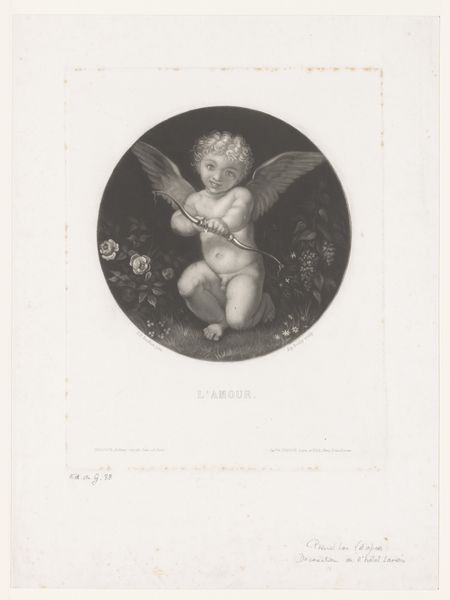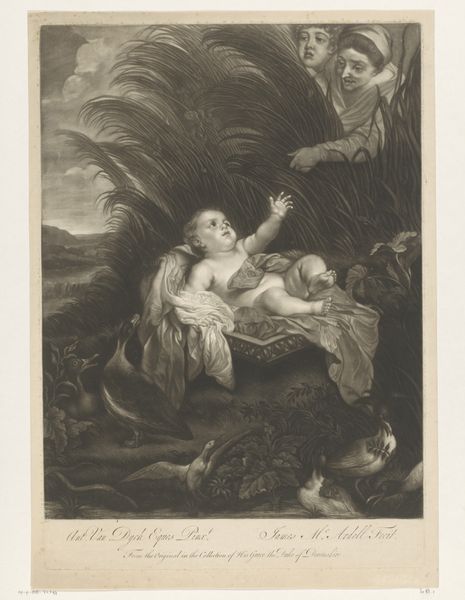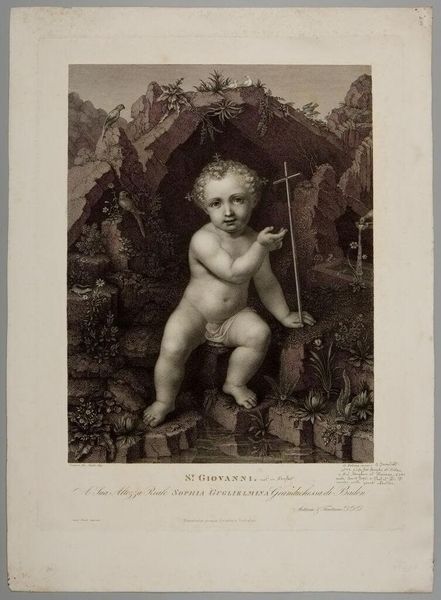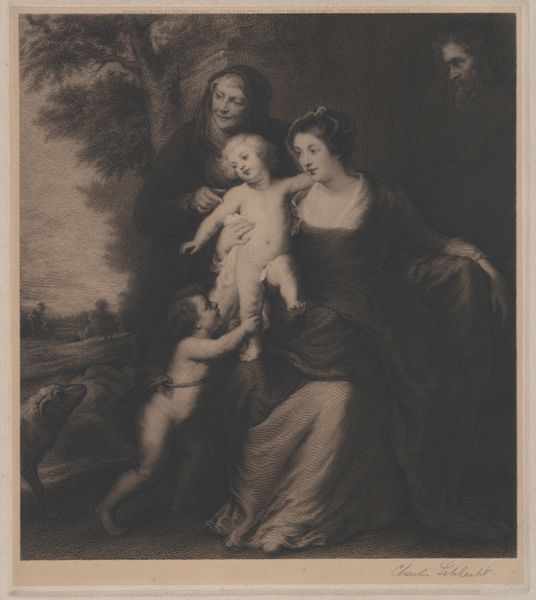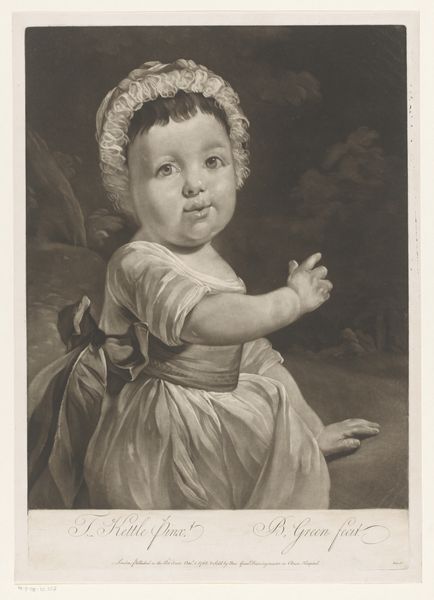
print, engraving
#
portrait
#
baroque
# print
#
figuration
#
history-painting
#
engraving
Dimensions: height 346 mm, width 250 mm
Copyright: Rijks Museum: Open Domain
James McArdell created this mezzotint titled 'Christuskind als Salvator Mundi', sometime between 1729 and 1765. Notice how the composition centers on the figure of the Christ Child, who dominates the space with an almost sculptural presence. The stark contrast between light and shadow enhances the textures of the child’s skin and the draped cloth. McArdell employs a sophisticated tonal range, characteristic of the mezzotint technique, to create a rich visual experience. The background, a blend of natural and divine elements, is rendered with a softness that contrasts the sharp, almost hyper-realistic depiction of the child. The cross in the child's hand and the orb at his feet are not merely symbols but structural components that add to the complexity of the image. The semiotic interplay here invites us to consider how symbols function within artistic and cultural contexts. The contrast between the child's vulnerable, human form and the powerful symbols of salvation suggests a destabilization of traditional religious iconography, offering new ways of interpreting power, innocence, and divinity. This piece remains a powerful example of how formal qualities can inform deeper philosophical reflections.
Comments
No comments
Be the first to comment and join the conversation on the ultimate creative platform.
